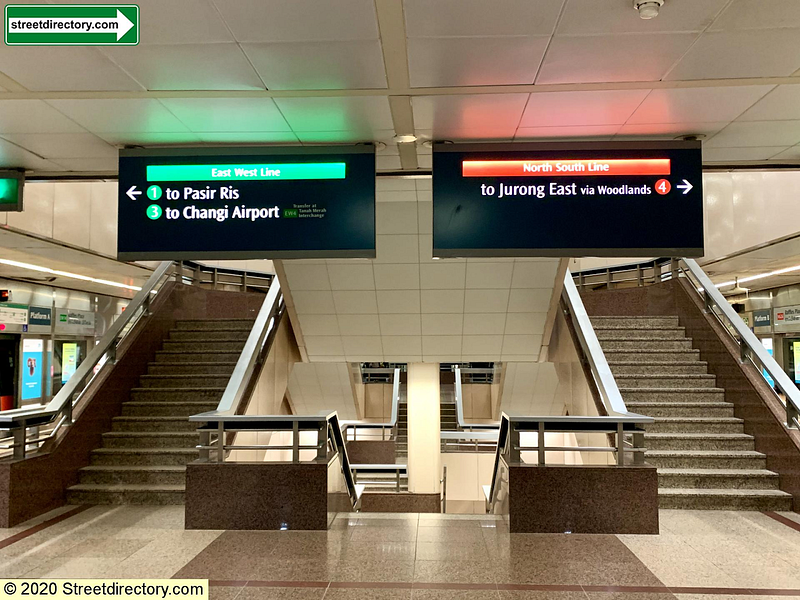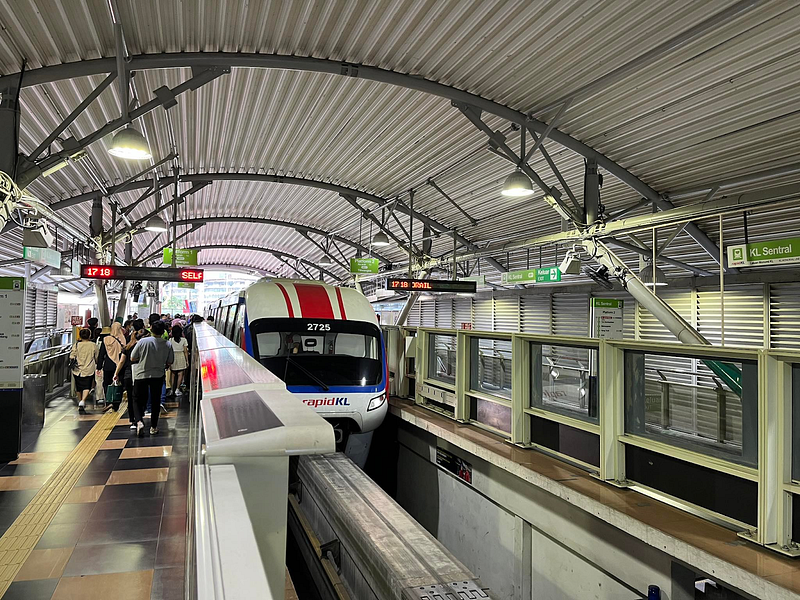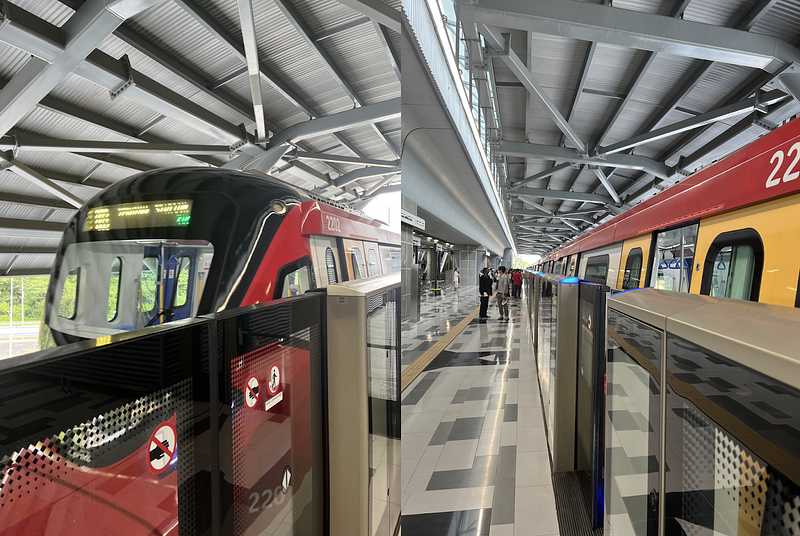Public Transport in Malaysia: the Good, the Bad, and What Could be Better
The state of Malaysia’s traffic jams have exponentially exacerbated recently. Much too often Malaysians find themselves stuck in a…
The state of Malaysia’s traffic jams have exponentially exacerbated recently. Much too often Malaysians find themselves stuck in a bumper-to-bumper conundrum in the rush hour. In many cities, public transport is the answer. However, public transport is unfortunately an incredibly polarising topic. There are people that rely solely on it for their everyday commute, in comparison to those who do not know that their city or town provides these services. This is the case in many countries where public transport is not well planned and executed.
Public perception plays a monumental role to get people on trains. Too often it is perceived that public transportation is only used by individuals who are not able to procure their own private vehicle. This perpetuates a division of class, thereby resulting in a self-fulfilling prophecy to which the statement becomes true. Eventually, this creates a scenario in which public transportation infrastructure is neglected by authorities, restarting this vicious cycle all over again.
Of course, for people to be convinced to use public transport, there needs to be incentive. For people to actually want to ride the public transport, it has to be more competitive and convenient compared to obtaining and driving their own private vehicles. Public transport should also have a relatively competitive speed compared to driving. To achieve this, a few forms of public transport can and should be utilised to make the most effective network.
All About Rail Transit
Urban rail transit can be separated into a few categories, namely: rapid transit, commuter rail, light rail. Rapid transit is categorised with having frequent services with high capacity and high speed. They should be 100% fully grade separated, meaning they do not share tracks or roads with any other form of transport. Commuter rail involves longer distances, with less frequent services, often following a timetable; they still use high capacity trains and often are not fully grade separated. Light rail consists of low-capacity trains, serving less densely populated areas with perhaps limited space for fully fledged infrastructure for a mass transit system.
As a transport nerd, seeing the terms “MRT” and “LRT” being thrown around and used interchangeably inflicts subtle rage. Strictly speaking, mass rapid transit (MRT) requires a larger capacity than light rapid transit (LRT). Counterintuitively, the line with the highest ridership is indeed labelled an LRT. In fact, the two LRT lines in Malaysia can and should be renamed as MRTs as they simply do not fit into the category of ‘light’ transit.
Another factor infesting the development of public transport are ‘gadgetbahns’. They seemingly provide attractive modern technological solutions to what seems like an impossible problem. They are often highly attractive to the eye, but also exceptionally impractical. Some examples include monorails and bus rapid transits, both of which exist in KL.
The defining feature of the monorail is the single rail that they run on. While it may seem as a very futuristic form of transport, this actually requires more specialised maintenance, adding to its running cost. Furthermore, monorail track crossings and monorails in general are significantly more intricate compared to traditional rails, causing a much greater chance of a breakdown. Monorails are also often low in capacity and cannot achieve high speeds, and so run infrequently. There are a few exceptions to this; however it stands that most monorails are flashy, but frankly inefficient forms of transit.
The Problem Child: the Kelana Jaya Line
Diverting attention to the line with the highest ridership in Malaysia: the Kelana Jaya Line. Being the most used line in Malaysia, there are so many things wrong with it. Most everyday riders would have noticed the large wide rail in the middle of the two running rails and questioned the purpose of it. It is actually an aluminium induction strip, which the train uses to ‘pull’ itself along for traction. This type of technology is called linear induction and is similar to what is used in maglev trains. Sounds cool, right?
It’s not.
This is a perfect example of gadgetbahn. This technology is far less efficient than traditional motors (Palka & Woronowicz, 2021). The magnetic propulsion between the motor and induction strip also causes the train to ‘float’ slightly, causing a shaking motion at higher speeds. These flaws root deeper, as once installed, the system is permanent. The entire line is stuck with this technology for as far as it is going to exist. Overhauling the technology requires infinitely too much time, work and money for it to be worth it. What does that mean? It means that this line forever requires its rolling stock to be supplied from one manufacturer, that the maintenance teams are required to undergo special training to deal with this.
Now you may think to yourself, why install this technology at all if it was so bad? The purpose of this type of traction is for steep climbs and sharp curves, for which the Kelana Jaya Line does not possess. It was because it was deemed as a ‘breakthrough’ technology at the time: to put it simply, this technology was seductive to the directors, who wanted to be ‘innovators’ of the technology, when in reality, it is completely unnecessary. This is only one example of the many other bad transit decisions made with ‘pride’ and not pragmatism in mind. It is a frustrating but prevalent trend among the transit planning committees.
So, what defines a ‘good’ transit system?
Transit Planning
A good plan is halfway to having a job done. A transit system should be an intricate network of transit lines, planned altogether to provide true connectivity and redundancy. As mentioned, the use of multiple modes of transport is critical in supplementing the weaknesses of each transport system.
In Malaysia for example, we have feeder buses running ‘looped’ routes from certain train stations to collect passengers from the vicinity. In reality, the state of these buses are dauntingly questionable, as though it has been only thrown in as an afterthought. Bus stops are often only illustrated with a signboard on a metal pole, leaving many first-time commuters confused and scared as to whether buses do actually serve the stop. Furthermore, the lack of shelter and benches just leaves passengers stranded in the harsh heat of the Malaysian weather, often also making it impossible to take the bus in the rain. Add this with the unknown variable of the arrival time of buses, and it is an equation for a feeling much more than unpleasant, deterring users.

Proper transit planning also includes transfers. Transfers from one line to another should be properly planned, to avoid long walks under harsh conditions. It is always optimal to have a transfer without faregates involved, made even better if it is a cross-platform transfer, as in the case of Raffles Place Interchange in Singapore, where you can change lines by hopping across a platform.

It is obviously tough to plan for these intricate types of interchanges, but it would be a very good investment for the many years that the interchange will be used, saving precious time on everyday commute.
Frequencies
Frequencies should be appropriate. A 10 minute wait for rapid transit is unacceptable. The optimal headway would be 3 minutes per train during peak hours. To put that into perspective, that is 20 trains an hour. If the capacity of one train is 1200 passengers, it would amount to 24,000 passengers an hour. Now consider just a 1 minute difference of 4 minutes per train, it would be 15 trains an hour, amounting to 18,000 passengers. That is a difference of 6000 passengers hourly, or a 25% decrease.
Maintenance and Continuous Improvement
While a good plan is halfway to a good job, constant effort is required to make sure it does not deteriorate. Taking an example again from the Kelana Jaya Line, its peak hour frequency has been reduced to 5 minutes from its usual 3 minutes due to an insufficient amount of functional trainsets. This is largely due to a mass dysfunction of the brakes, with the cause of the issue unclear as of now. It can be speculated that this could have been prevented with more regular, preventative maintenance. A similar problem is faced with the Kajang Line, where peak frequencies are up to 6 minutes compared to the previous 4 minutes. Other aspects that require maintenance include station facilities, including toilets, escalators, lifts.
The Japanese concept of ‘Kaizen’ means continuous improvement. This can be implemented as it has been in Singapore’s SMRT, to increase the efficiency of the workforce in doing maintenance. It even helps motivate employees along the way! In the long term, it will lead to a more innovative workforce who will not only work harder, but also smarter.
These are just a few factors that I think would contribute to a great transit system. Some other factors include: price, rolling stock, wayfinding, transit-oriented development etc.
The Putrajaya Line and Moving Forward
At the time of publication of this article, the month of free transit rides in the Klang Valley would have just expired, and the Putrajaya Line would have already been open for more than a month. Having personally ridden the new line, I feel that it has the highest ride quality of all the lines. It also has a greater frequency compared to the Kelana Jaya and Kajang Line at 4 minutes per train. Perhaps it can be attributed to the fact that it is a brand new line; however if it consistently performs to this standard, it will be a model to all the other lines in Malaysia to follow.
Even though the free month of rides has been controversial and berated (which I personally agree with), I have first-handedly seen an increase of parents bringing their children to travel on trains during weekends. As someone who has been a sort of ‘train fanatic’ from a young age, I hope that these experiences would foster and nurture their interests.
To foster systemic change, there needs to be demand. The frequencies of the Kelana Jaya and Kajang Line are expected to be patched by August, which by itself is far too long. As unpleasant as it may sound, I would like to encourage more people to travel by public transport where possible. This will influence officials to take transport decisions more seriously. To quote Gustava Petrov, the Mayor of Bogotá, “A developed country is not a place where the poor have cars. It’s where the rich use public transportation”. #JOMNAIKMRT
[Written by: Teoh Jin. Edited by: Siow Chien Wen.]





